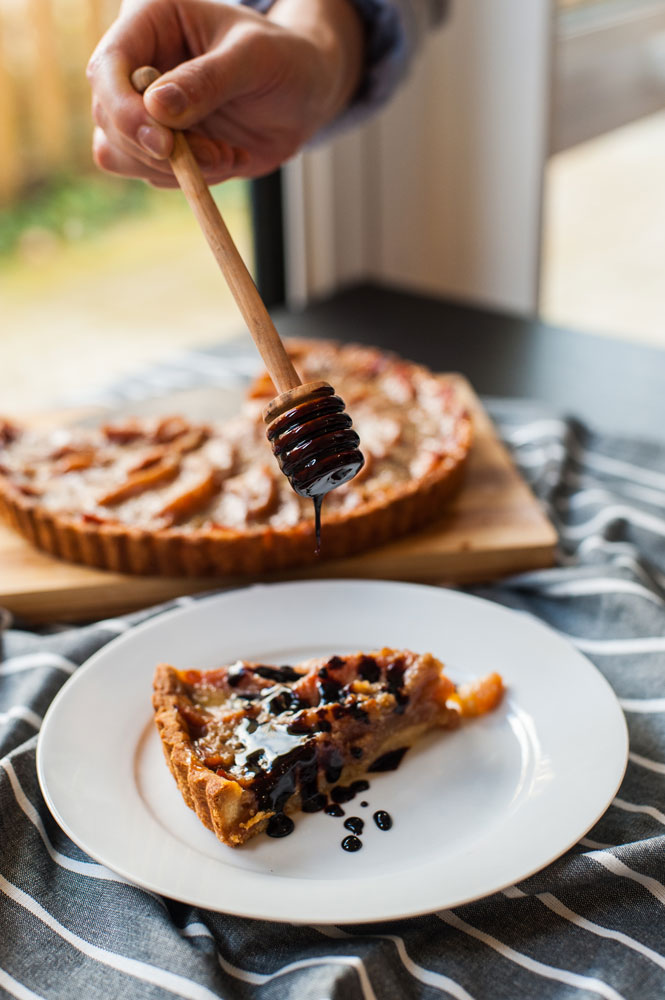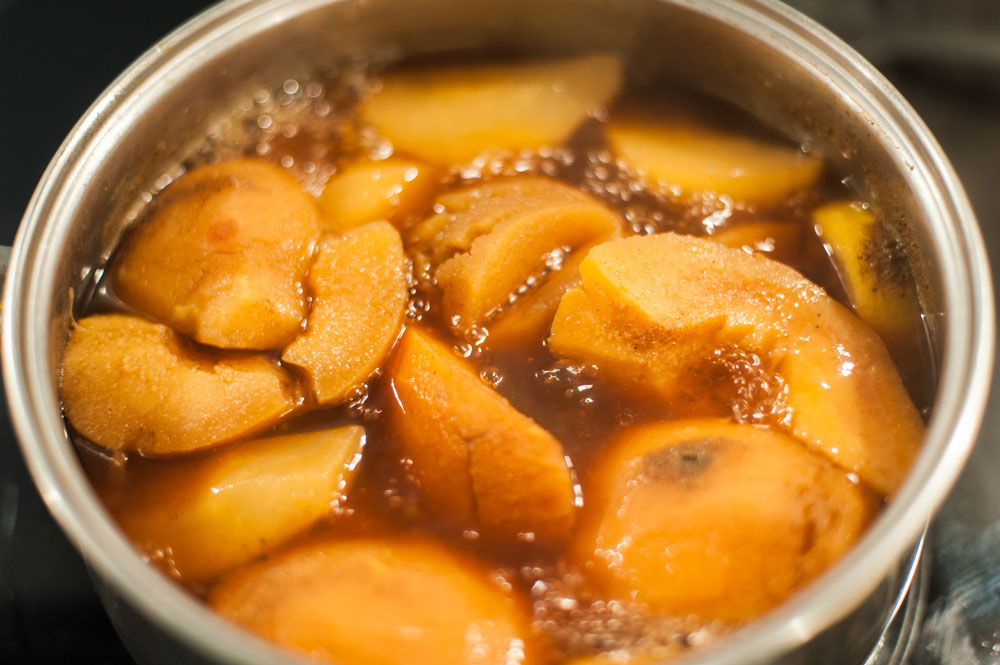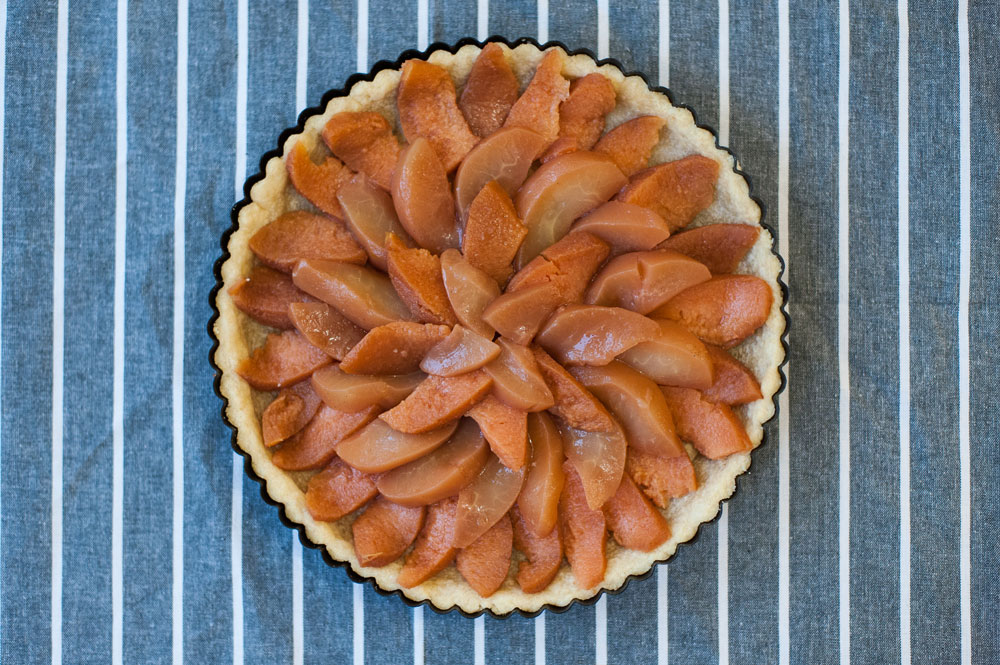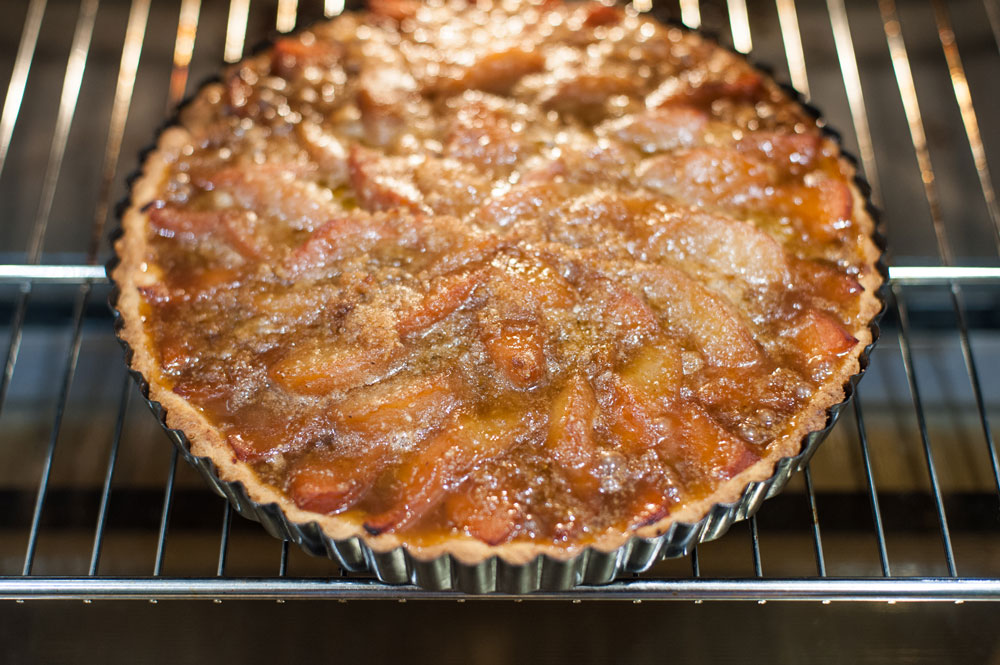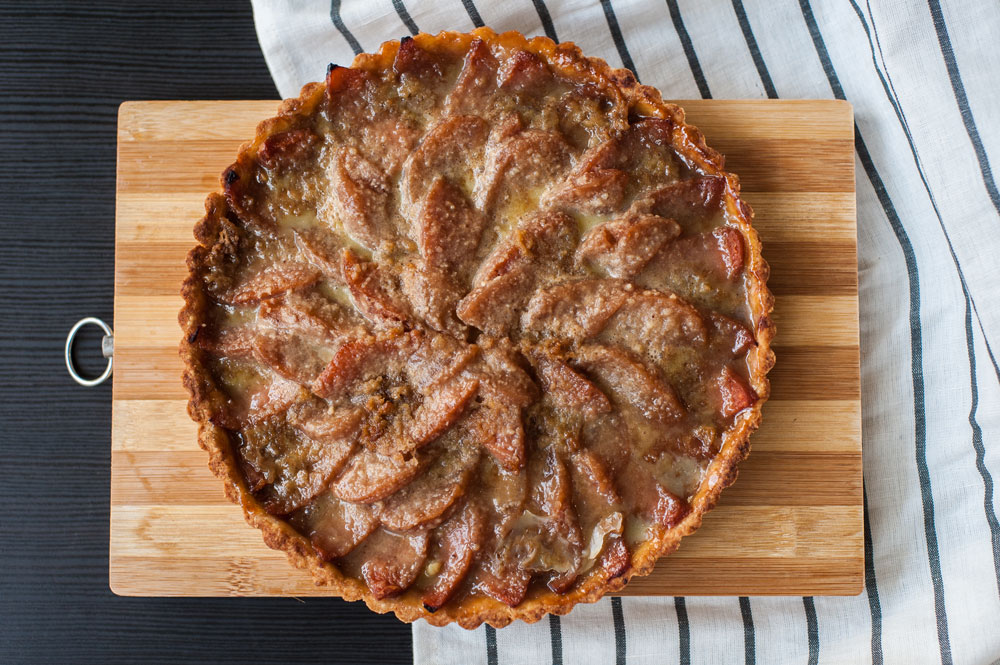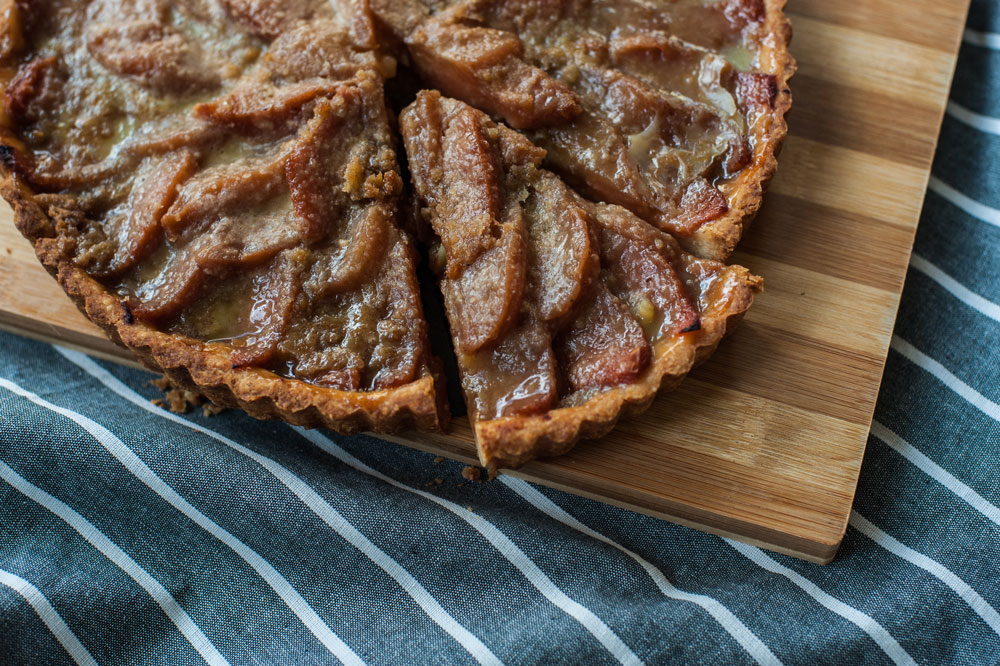Recipe
Pear & Quince Tart
Words & Photography by Kate Beard
Quinces – why do you make it so hard for us to love you? Scoring almost as high as pomegranates on the “difficulty of preparation” vs “deliciousness of the payoff” scale, quinces can be quite rewarding for those who can get past the tough exterior, woody texture, and bitter flavour. The uncooked quince looks and tastes pretty unappealing. But bring the fruit to your nose, and you’ll get a hint of the hidden treasure waiting to be unlocked within. All it takes is some patience and a good batch of poaching liquid. For this tart, I put pears and quinces together (they’re botanical cousins, so they play well together) and used molasses and brown sugar to riff off of David Lebovitz’s original quince-poaching liquid. The result is a tart and an accompanying reduction that are redolent with the comforting, spiced flavours of autumn.
Poaching recipe adapted from David Lebovitz’s “Rosy Poached Quince”.
Ingredients
For poaching
3 large pears
3 large quince
1 1/2 litres water
1 tbsp vanilla bean paste
200g brown sugar
200g molasses
1 lemon, sliced
2-3 sticks cinnamon (or 1/2 tsp ground cinnamon)
a few whole nutmegs (or 1/2 tsp ground nutmeg)
1/2 tsp ground ginger
For the crust
150g all purpose flour (or 190 g flour if you don’t have almond flour)
40g almond flour/ground almonds
1/2 tsp salt
10g soft brown sugar
120g butter/lard/mix
2 tbsp milk
For the filling
Poached quinces and pears
150g sugar
1/2 tsp flour (or 1 tsp flour if you don’t have the almond flour)
1/2 tsp almond flour
1/2 tsp salt
30-50g of cold butter
1 tbsp cornstarch/cornflour
Method
Poaching
Add all the ingredients except for the pears and quinces to a large pot. On medium to high heat, bring the liquid to a bubbly simmer.
As the poaching liquid is heating, prepare your fruit. Peel them, quarter them, and cut out the tough and fibrous bits in the middle, especially in the quinces.
Add the fruit to the poaching liquid and let it cook, simmering and uncovered, for at least an hour. Check your quince every once in a while (no need to check the pears, as they are softer) with a sharp knife – if you can pierce the fruit easily, they’re done. The quinces also turn a deep, gorgeous shade of coral as they cook, and the darker they get, the more done they are.
Remove the fruit from the poaching liquid. Turn the heat down so that the liquid is barely simmering. Continue to cook it for the next few hours, until it has reduced down to a thick, shiny, dark glaze. Be sure to keep a close eye on it as it reduces further and further, as you’ll need to turn the heat down when there is less liquid to keep from burning it.
You’ll end up with a syrupy, dark liquid redolent with the flavours of quince, spice, and molasses. Save this for drizzling over the finished tart.
Crust
Preheat the oven to 200 C.
In a medium to large bowl, mix together the flour, almond flour, salt, and brown sugar. Give it a stir with a spoon to distribute the ingredients more evenly (no need to sift them).
Making sure your butter/lard is fresh out of the refrigerator and very cold, chop it into small cubes. Drop these cubes into the dry mixture. (A note on butter vs lard: Southern cooks often use only lard or shortening to make pie crusts. Butter is, of course, the classic way to make pastry. I like to use a mix, but if you’re cooking for vegetarians, you may want to use all butter. If you’ve never tried it, maybe you want to use all lard. It’s up to you—it’s all fat anyways!)
Using a pastry cutter (or a fork if you don’t have a pastry cutter), begin to mix the butter into the dry ingredients. It’ll take 5-10 minutes, but eventually you’ll have a pebble-like, well-combined mixture.
Add the 2 tbsp of whole milk and stir the mixture with a wooden spoon. It may seem futile at first, but slowly it will come together in a ball. If not, dribble a bit more milk in until it does come together.
Roll the ball a bit between your hands and make sure all the dough is incorporated. Then, in a greased or non-stick 9” tart pan, press out the dough to make the crust.
Prick the base lightly a few time with a fork. Blind bake the crust for 5-10 minutes, until it starts to look dry instead of wet and shiny. If you have baking weights, use those; if not, don’t worry if the crust puffs up. Just gently press it back down when you take it out of the oven.
Let the crust cool completely, and then put it in the freezer for at least half an hour, or until you are ready to fill your tart.
Filling
Preheat your oven to 200 C again (if you have turned it off).
Once your poached pears and quinces have cooled, slice them into nice, thin “leaves” that can easily be arranged on the crust. You will probably have more fruit than you actually need, but this is a good thing. Some of the quarters of fruit (for some reason) got “crumbly” in the poaching liquid and fell apart when I tried to slice them. It’s better to have more than you need than to run out of nice slices of fruit for your tart!
Remove the crust from the refrigerator. Arrange the slices on the crust. It can be in concentric rings like I did, or neat rows, or a herringbone pattern, or placed willy nilly… it’s your tart, you can decide.
Combine the rest of the filling ingredients in a bowl. Use your pastry cutter or fork to mix these together like you did with the crust, but only until they are just combined. Then sprinkle all of the mixture over the fruit. It will probably cover the entire tart and look like there is too much, but it will melt down and fill in all the space in between the fruit.
Bake the tart for 20-30 minutes, or until the filling has melted completely and the crust has turned a lovely golden-brown colour.
Remove the tart from the oven and cool completely. Then refrigerate for at least an hour before serving (to let the filling set).
Enjoy your tart with a drizzle of the poaching liquid, and maybe some whipped or clotted cream.
